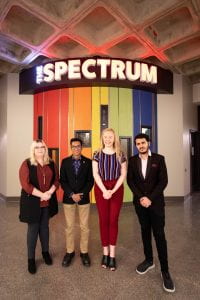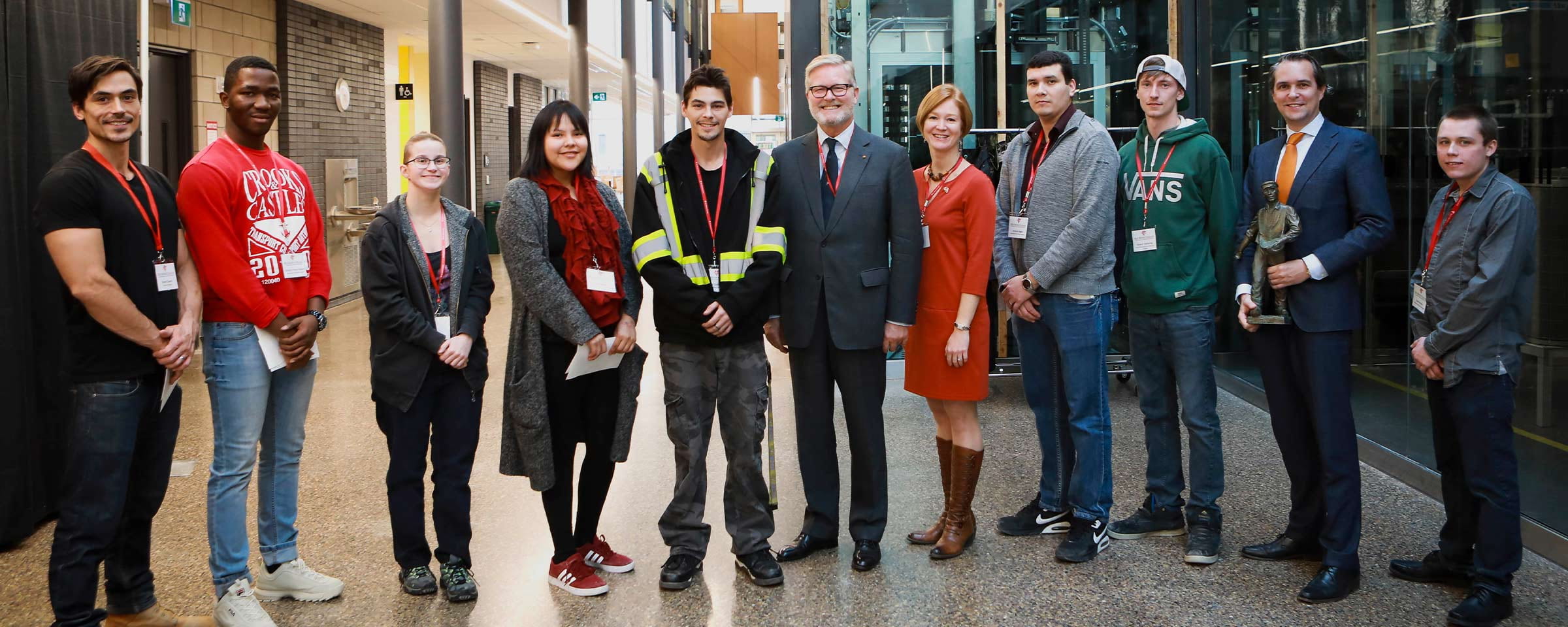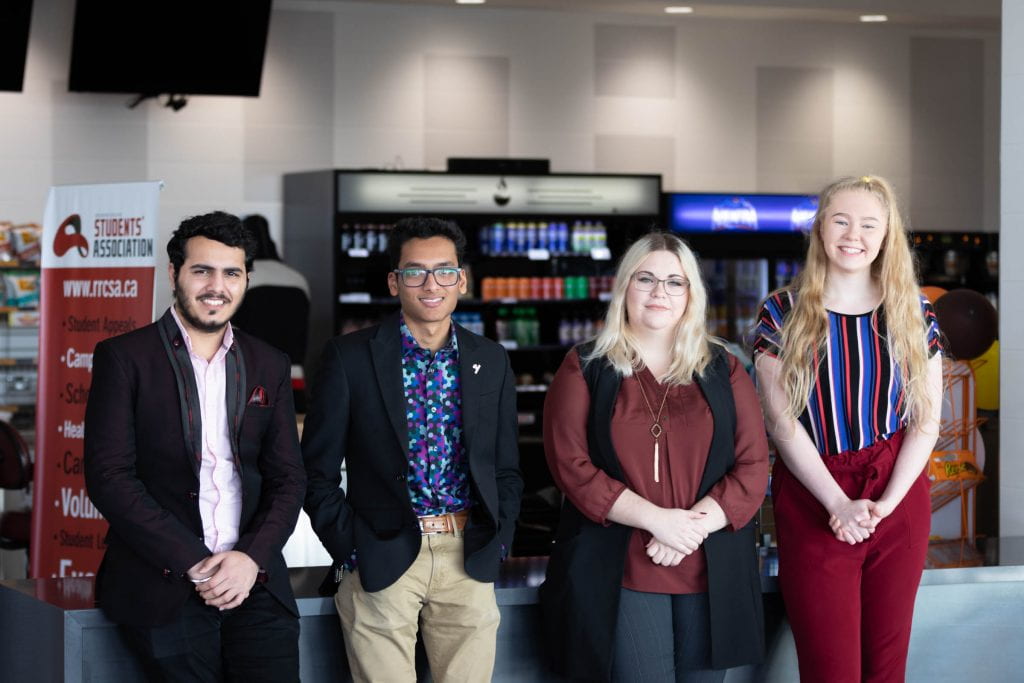2019 National Philanthropy Day Donor Spotlight: Philanthropic by Association
The RRC Students’ Association (SA) shares a lot of common ground with the College. And since 2003, it’s improved that ground to the tune of more than $3.3 million in capital contributions for major building projects.
The Cave lounge at the Notre Dame Campus (NDC) has been the largest project to date, with a $710,000 renovation completed in 2008, followed by a $100,000 expansion to the bar area in 2010.
The latest project was an $80,000 renovation to create The Spectrum — described as a safe(r) space for 2SLGBTQIA* students — which had a grand opening in September at NDC. And the SA has set its sights on another significant space, a mental-health wellness lounge that would require a contribution of more than $350,000.
SA executive director Steve Nachtigall says the association has conceptual drawings in hand, but has yet to present a project proposal to RRC’s senior leadership team.
Each year, the SA earmarks a percentage of revenues from student fees to invest in a building trust fund. While the annual allocation has been as high as 20 per cent, it currently stands at 15 per cent and amounts to $100,000-$120,000.
Until 2003, the SA collected money for the building fund, but didn’t spend it. The original intent was to amass capital for a standalone SA building, but in 2003, the 12-person board of the day realized the fund would never be large enough, so it was instead repurposed to help further the SA’s mission to “improve the student experience” at RRC.
That year, the SA contributed $300,000 towards construction of the downtown fitness centre and $85,000 towards The Mercantile at the Exchange District Campus, as well as $280,000 to expand The Ox store at NDC.
Several more large projects were undertaken at NDC from 2004-2008: RRC provided space and the SA contributed funds to renovate and furnish SA offices ($355,000), the Workshop study space ($450,000) and the Lockers gaming area, complete with pool tables and Xbox games ($300,000).
 Since 2008, the SA has supported a number of smaller projects, the most significant being a new food bank trailer, for which it contributed $120,000 in 2015.
Since 2008, the SA has supported a number of smaller projects, the most significant being a new food bank trailer, for which it contributed $120,000 in 2015.
As an independent, non-profit student organization, the SA does not receive funding from the College or governments, but it has a mutually beneficial operating agreement with RRC, which provides rent-free space for its offices and operations.
Its revenue is derived from student fees, two convenience stores — The Mercantile and The Ox — and a small coffee shop, for which the SA contributed $200,000 during construction of the new Skilled Trades and Technology Centre at NDC in 2018. Any commercial profits, and 85 per cent of revenue from student fees, goes to operations, including administration, programming and services.
A major portion of that amount, more than $100,000, pays for on-campus student events, for which the SA hires students as full- and part-time. It also operates the College’s food bank, funds student-run newspaper The Projector, advocates on behalf of students, helps set up campus clubs and facilitates fundraising efforts.
Since 2011, the SA has contributed about $400,000 in requested donations, and it budgets about $135,000 annually to support various college departments and events.
Current SA president Josh Roopchand says helping departments enhance their services is another way to enhance the student experience. For example, the College might ask the SA to contribute to an Indigenous Centre graduation celebration, cover the cost of refreshments for grads and their families at convocation, or support events celebrating international cultures.
The group contributes $10,000 in support each year for formal athletics programs, as well as $15,000 for both scholarships and peer tutoring, and it supports RRC’s Healthy Minds Healthy College (HMHC) initiative.
“They have an annual budget that they go to College with, but part of their budget also comes from us,” Roopchand says.
During Thrive Week, a week-long partnership with HMHC, the SA typically hosts a Zen Lounge in The Cave, with soothing, ambient music and snacks. While a permanent wellness lounge is not officially in the works just yet, Roopchand says the SA plans to ask RRC leadership to provide a dedicated space at NDC that could be used for mental-health programming.
A secluded quiet zone, the proposed lounge would be a good fit in the lower-level mall area at NDC, close to the other SA-run lounges and offices.
“Students would be able to go in there and have a bit more of a relaxing atmosphere, rather than going to either The Cave or Workshop or Lockers,” he says. “We’re hoping that when it’s actually built it’s going to be like a breakaway, so you’re going to walk in there and it’s going to be like you’re not even at the College at that point.”
(Shown above, from left: Yash Chopra, Vice-President Internal; Joshua Roopchand, President; Melissa Ghidoni, Vice-President External; Carmen McIntosh, Vice-President Academic)
Profile by Pat St. Germain (Creative Communications, 1989)

